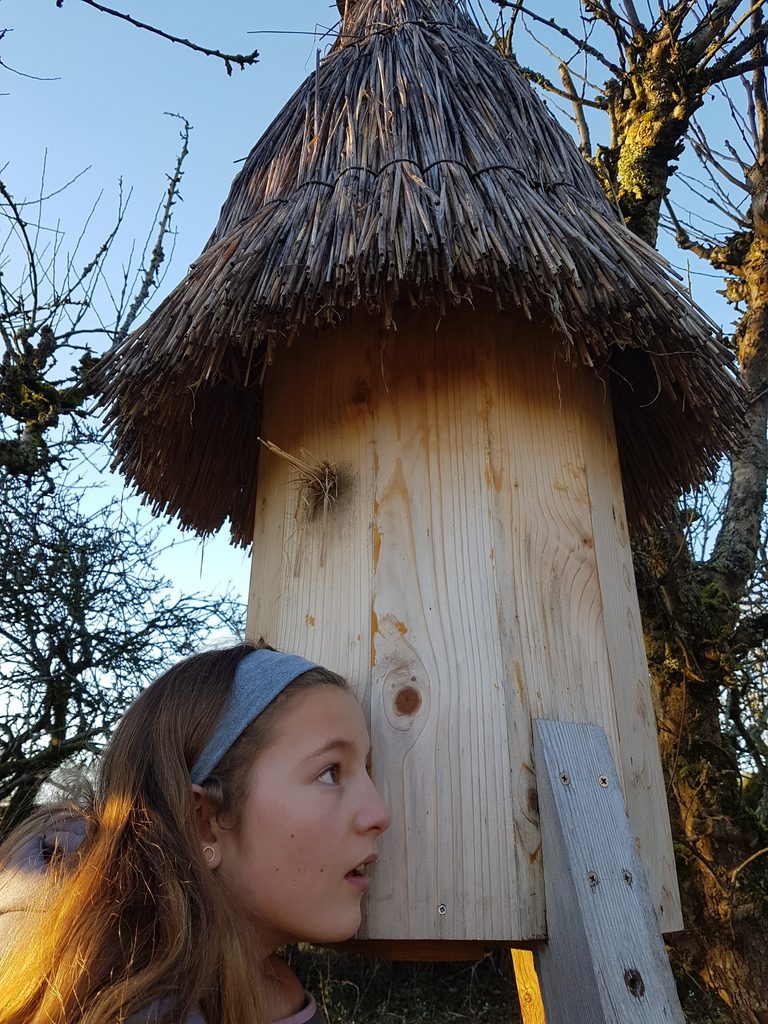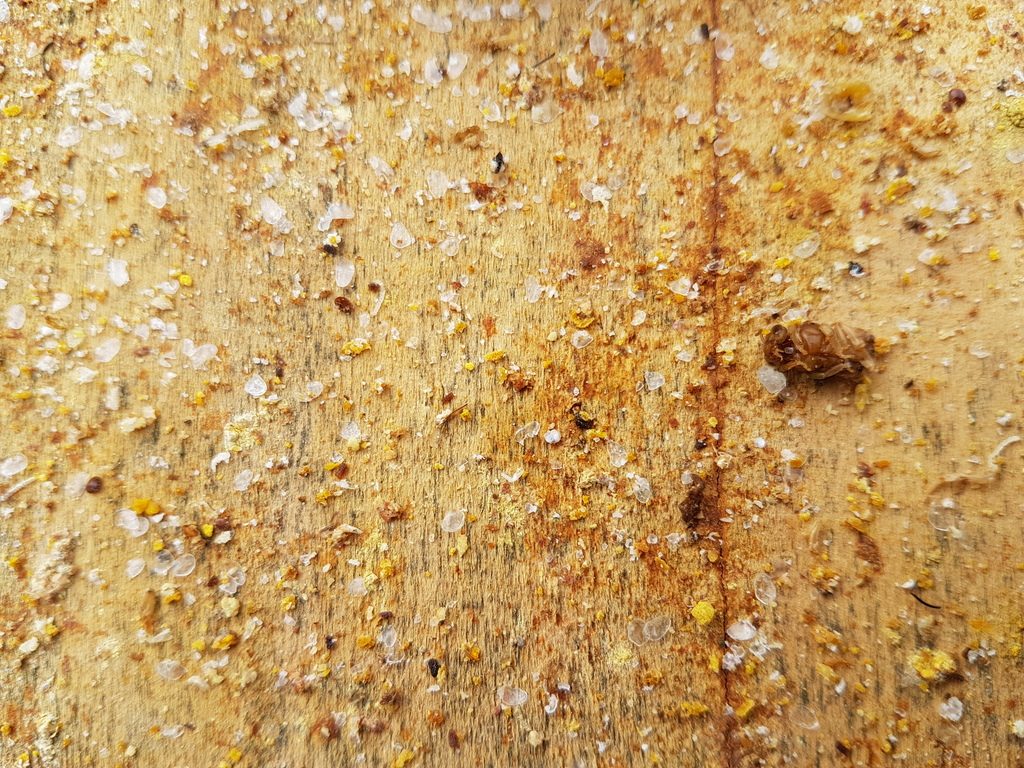Early Spring is an anxious time for a beekeeper. As I do not feed the bees sugar or apply any chemicals to control Varroa mite, I am relying on the bees having collected enough food in the Autumn and being able to survive until the first flowers of Spring. It is great to see them collect orange pollen from the first snowdrops, followed a few weeks later by an abundance of yellow willow pollen. From observing this, I know that the queen has started laying again and that soon the population will be increasing after feeding off these fresh stores. This puts a pressure on the colony and often, while rejoicing that they have survived, it can be sad to see life dwindle at the entrance and the colony fail due to lack of honey.
I don’t open the hive but it is possible to put an ear to the entrance hole and hear the murmur of life within. This year all my hives survived as well as the dozen wild colonies which live in cavities in roofs, old chimneys and trees around my village.
I wait until April to remove the base of the hive and look up to see how the bees are faring. On the video below you can see that the bees are already building new comb. It is an awesome sight. There wasn’t a loss of heat or pheromone and I was able to put my head right up to the hole and film without any bees getting aggressive.
I couldn’t see any signs of condensation and the base board was dry. A few Varroa mite could be seen, but the majority of debris was wax scales which had been dropped by the bees. It will be interesting to see whether they have been picked up on the next inspection.
